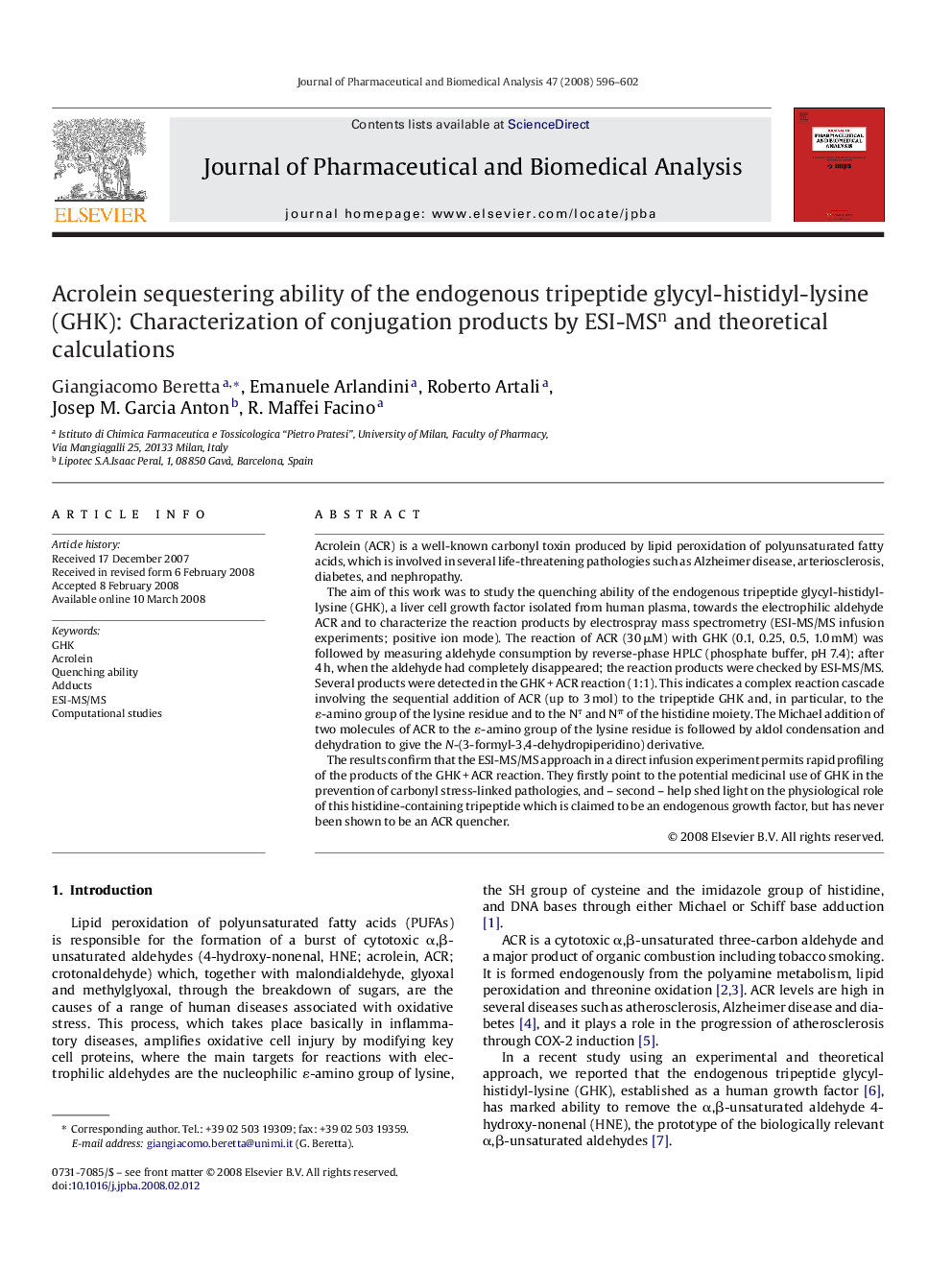| Article ID | Journal | Published Year | Pages | File Type |
|---|---|---|---|---|
| 1223110 | Journal of Pharmaceutical and Biomedical Analysis | 2008 | 7 Pages |
Acrolein (ACR) is a well-known carbonyl toxin produced by lipid peroxidation of polyunsaturated fatty acids, which is involved in several life-threatening pathologies such as Alzheimer disease, arteriosclerosis, diabetes, and nephropathy.The aim of this work was to study the quenching ability of the endogenous tripeptide glycyl-histidyl-lysine (GHK), a liver cell growth factor isolated from human plasma, towards the electrophilic aldehyde ACR and to characterize the reaction products by electrospray mass spectrometry (ESI-MS/MS infusion experiments; positive ion mode). The reaction of ACR (30 μM) with GHK (0.1, 0.25, 0.5, 1.0 mM) was followed by measuring aldehyde consumption by reverse-phase HPLC (phosphate buffer, pH 7.4); after 4 h, when the aldehyde had completely disappeared; the reaction products were checked by ESI-MS/MS. Several products were detected in the GHK + ACR reaction (1:1). This indicates a complex reaction cascade involving the sequential addition of ACR (up to 3 mol) to the tripeptide GHK and, in particular, to the ɛ-amino group of the lysine residue and to the Nτ and Nπ of the histidine moiety. The Michael addition of two molecules of ACR to the ɛ-amino group of the lysine residue is followed by aldol condensation and dehydration to give the N-(3-formyl-3,4-dehydropiperidino) derivative.The results confirm that the ESI-MS/MS approach in a direct infusion experiment permits rapid profiling of the products of the GHK + ACR reaction. They firstly point to the potential medicinal use of GHK in the prevention of carbonyl stress-linked pathologies, and – second – help shed light on the physiological role of this histidine-containing tripeptide which is claimed to be an endogenous growth factor, but has never been shown to be an ACR quencher.
